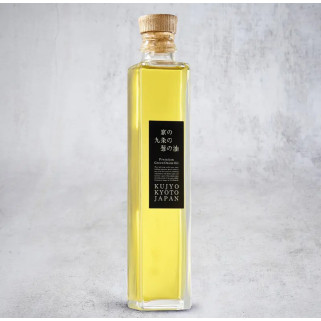Japan is an island blessed with abundant nature. The Japanese people developed mainly as farmers working the land and harvesting the fruits of the mountains, rivers, and ocean. They became great lovers of a wide variety of fish and shellfish, which are a vital source of protein. Throughout the history of the development of their culinary culture, the Japanese have formed and evolved their fish-eating culture, from a wide variety of preparation methods such as grilling and stewing to a wide variety of products such as dried fish and fish paste.
During this historical process, Japanese people tried various methods of using katsuobushi to prepare dashi, and katsuobushi became the key ingredient for dashi. What is believed to be the primitive form of katsuobushi is mentioned in Japan's oldest historical record, the “Kojiki” (Record of Ancient Matters) from the year 712.
At that time, katsuobushi was a valuable commodity used to pay taxes in kind because it was known for its long shelf life. However, its production method was probably very simple at the time; it was simply simmered in hot water and then dried in the sun. Later, in the Samurai era, it is said that Samurai soldiers carried and ate katsuobushi just as it was; it was their ration on the battlefield. Around 1600, there was a change in the method of producing katsuobushi. Traditional sun drying was replaced by smoking over a wood fire, a process now known as arabushi.
Then, around 1800, it is believed that the karebushi production technique appeared when it was discovered that growing a fungus of the Eurotium genus on arabushi improved its taste. This is how katsuobushi became a unique Japanese ingredient. As a classic ingredient essential for dashi used in Japanese cooking, katsuobushi played an important role in the development of many local cuisines that emerged during the flourishing Edo period (1600-1868). In addition, it was used as an offering to the gods. As a result, it came to be regarded as a gift of good fortune and a wedding present, becoming an integral part of Japanese life and customs.
What are the qualities of block katsuobushi compared to ready-made flakes?
Whole katsuobushi preserves its flavor and ages very well if stored away from light and moisture. After each use, it is recommended to wrap it in plastic wrap, then vacuum seal it (for professionals) or place it in an airtight container, and then store it in the refrigerator at an ideal temperature not exceeding +5°C. Katsuobushi delivered in flakes loses its flavor very quickly if it is not consumed within a very short period of time and if it has not been packaged with nitrogen added to the packaging. It quickly becomes dull and its aromas fade. The taste notes quickly become unpleasant. The flakes should therefore be used within 8-10 days after opening the bag or after preparation. The use of nitrogen in the packaging allows for better preservation. However, it should be noted that packages larger than 500g should be avoided as they do not guarantee optimal organoleptic qualities. It is important to remember that only freshly grated or flaked katsuobushi reveals and preserves all its aromas.
How to prepare Katsuobushi DASHI broth?
Boil 1 liter of water, add 40 g of Katsuobushi flakes and simmer for 1 minute.
Turn off the heat and leave to rest for 2 to 3 minutes. Drain the katsuobushi using a strainer and set aside. Store the used Katsuobushi in the refrigerator to prepare a second serving or for other recipes. Drain off any excess liquid and refrigerate the used Katsuobushi (use within 24 hours).
You can also sprinkle the flakes on omelets, broths, mixed salads, and okonomiyaki.


















































